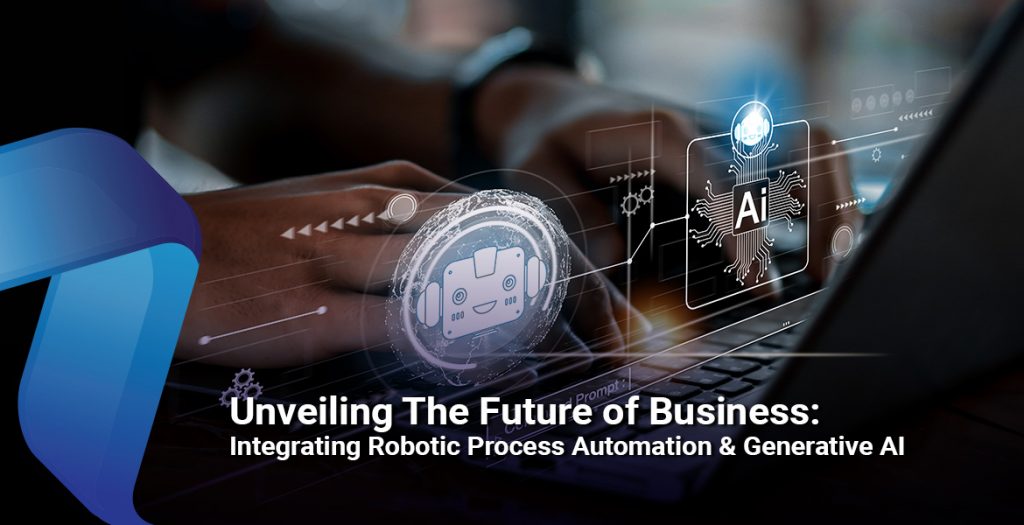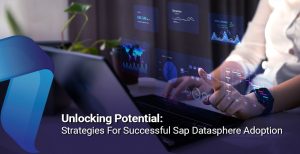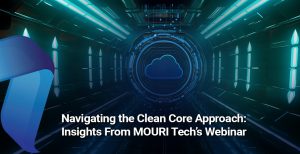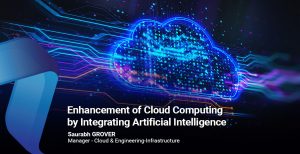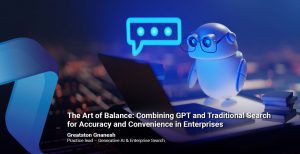In an era where digital transformation is more than just a buzzword, businesses are constantly seeking ways to be more efficient, agile, and innovative. A recent webinar hosted by Bruce Goodrich, Sales Director-Northeast at MOURI Tech, delved deep into one such avenue — integrating Robotic Process Automation (RPA) with Generative AI. The session featured industry stalwarts – Kanishka Sinha, Director, Hyperautomation Professional Services, Ingram Micro Inc., and Mayuri Darabastu, Director, Robotic Process Automation, MOURI Tech – who shared their insights on the transformative potential of these technologies across various sectors. Here’s a comprehensive look at the key takeaways from this enlightening discussion.
The Convergence of RPA & Generative AI: A Game-Changer for Industries
The webinar kicked off with an introduction to the transformative potential of combining RPA and Generative AI. While RPA is designed to automate routine, repetitive tasks, Generative AI takes it a step further by adding a layer of intelligence. This combination supercharges efficiency, reduces operational costs, and significantly improves service quality.
For instance, in the finance sector, RPA can optimize inventory levels, while Generative AI can enhance supply chain decisions by analyzing complex data patterns. In healthcare, RPA can handle administrative tasks like appointment scheduling, and Generative AI can assist in clinical decision-making by analyzing patient data. The legal sector can also benefit from this integration, as it can automate contract analysis, thereby mitigating legal and compliance risks.
"I firmly believe that the integration of RPA and Generative AI is not just an advancement; it's a revolution in how we approach business processes. This synergy is about unveiling a future where efficiency, creativity, and strategic decision-making converge, transforming the very fabric of business operations. It's an exciting journey towards a smarter, more responsive, and innovative business landscape."
– Mayuri Darabastu
Director of Robotic Process Automation, MOURI Tech
The Importance of Governance & Compliance
One of the most critical aspects discussed was the challenge of governance and compliance in implementing RPA and Generative AI. Both technologies are relatively new and require robust data governance and compliance policies to mitigate risks.
The panelists emphasized the importance of having proper “guardrails” in terms of information security and data sharing. They also highlighted the need for a clear plan on how to monitor and audit data regularly. A lack of proper governance could lead to unauthorized access, data manipulation, and leakage, which could be detrimental to any organization.
Future Trends: What to Watch For
As businesses continue to evolve, so do technologies. The panelists shed light on emerging trends that are shaping the future of RPA and Generative AI. One such trend is “Explainable AI,” which aims to make AI decision-making processes more transparent and interpretable. As AI becomes increasingly integrated into critical business processes, the need for explainability grows.
Another trend to watch for is enhanced analytics. Most RPA tool vendors are now integrating advanced analytics features into their offerings. These features not only provide real-time insights into the performance of automated processes but also help in making data-driven decisions.
"I see the integration of RPA and Generative AI as a pivotal moment in business evolution. This fusion is about more than just streamlining processes; it's about redefining them. We're not just automating tasks; we're creating an intelligent ecosystem where machines understand, learn, and evolve. This is the future of business – a landscape where hyperautomation unlocks new realms of efficiency, innovation, and growth."
– Kanishka Sinha
Director, Hyperautomation Professional Services, Ingram Micro Inc.
Best Practices for Successful Integration
For businesses considering integrating RPA and Generative AI, the panelists offered some best practices. The first step is to have a clear vision and objective. What do you hope to achieve with this integration? Is it cost reduction, efficiency improvement, or something else?
Once the objective is clear, the next step is to implement a robust governance framework. This framework should include processes for developing, deploying, and monitoring RPA and Generative AI systems. It should also have guidelines for handling compliance and dispute issues related to the use of these technologies.
Communication was cited as another crucial aspect. Keeping stakeholders informed about the decisions, plans, and outcomes is essential for the successful adoption of these technologies.
Human-Centric Approach: The Way Forward
The webinar concluded on a note emphasizing the human-centric aspect of these technologies. The goal is not to eliminate human intervention but to enable it. By automating routine tasks and utilizing AI for data analysis, businesses can free up human resources to focus on more strategic options.
To recap, the integration of RPA and Generative AI holds immense potential for transforming businesses across various sectors. However, it comes with its own set of challenges, primarily related to governance and compliance. By keeping an eye on emerging trends and following best practices, businesses can navigate these challenges and unlock the full potential of these transformative technologies.
The future is not just about adopting new technologies; it’s about integrating them in a way that aligns with your business objectives, governance policies, and human-centric approaches. And as the panelists aptly put it, the technology is not just driving growth; it is growth itself.


